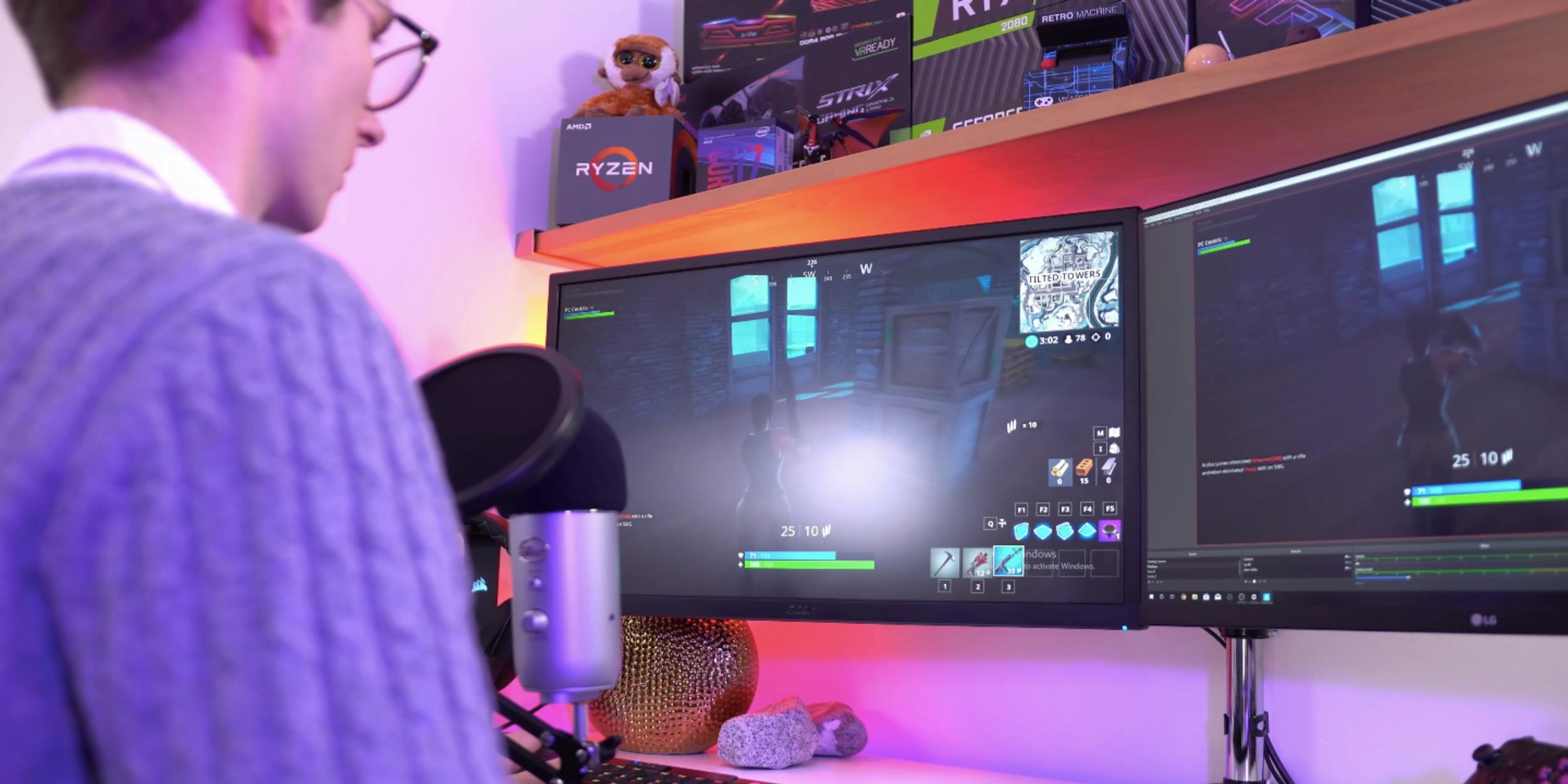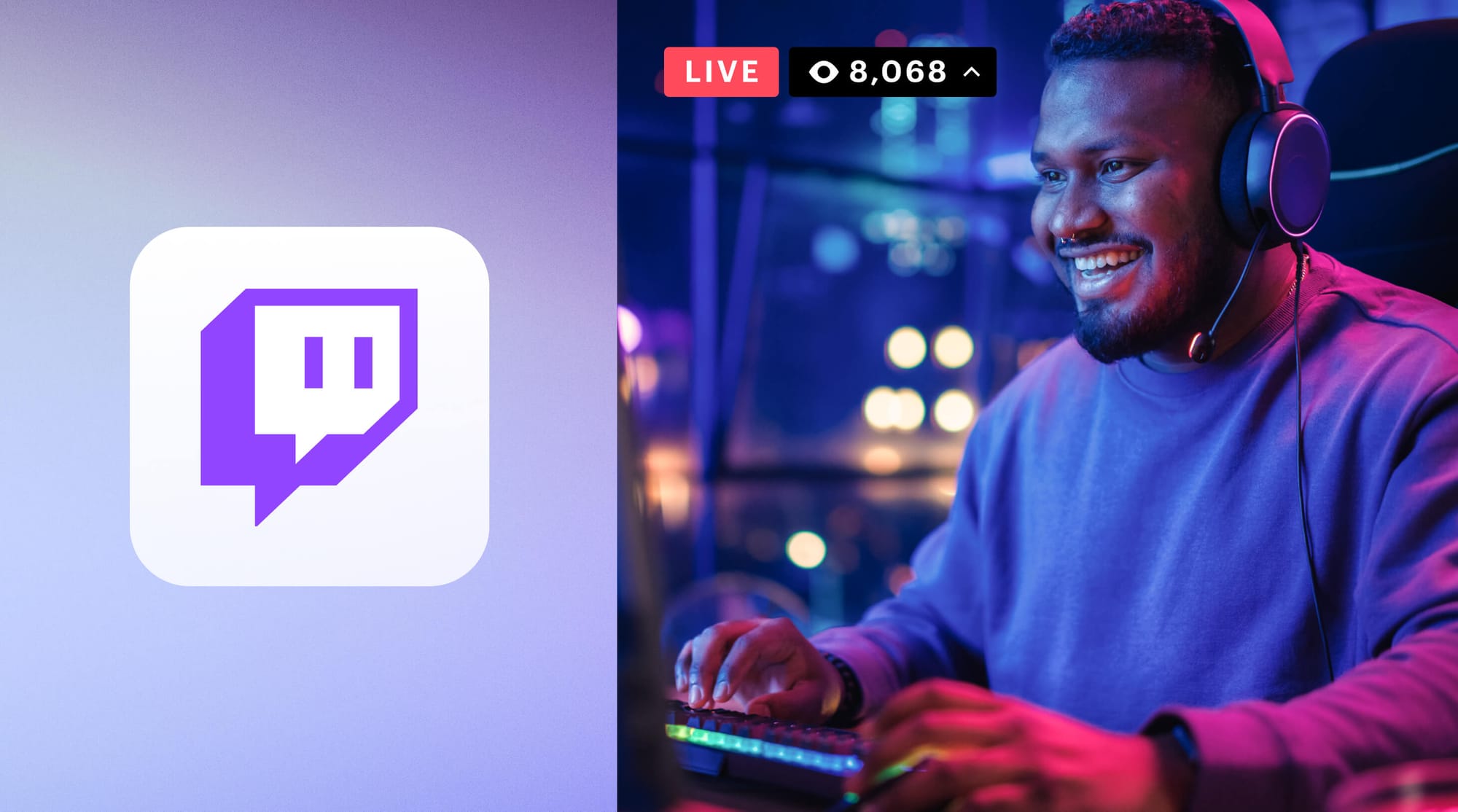Introduction

Did you know that over 2.7 billion hours of live streaming content were watched globally in the first quarter of 2024? That’s enough time to binge-watch your favorite TV show a million times over! Live streaming has skyrocketed in popularity, transforming from a niche hobby to a mainstream entertainment juggernaut. Platforms like Twitch, YouTube Live, and Facebook Live have become the go-to spots for gamers, influencers, and even brands to connect with audiences in real-time.
But what makes live streaming so important in today’s digital age? For starters, it offers an unparalleled level of interactivity. Viewers can engage directly with streamers, ask questions, and even influence the content. This real-time interaction builds a sense of community and loyalty that’s hard to achieve with pre-recorded videos.
Whether you’re a seasoned streamer looking to up your game or a newbie just dipping your toes into the streaming waters, this guide is packed with tips and tricks to help you shine. From choosing the right platform and equipment to creating engaging content and growing your audience, we’ve got you covered. So grab your webcam, put on your best streamer persona, and let’s dive into the world of live streaming!
Setting Up for Success

Choose Your Platform
When it comes to live streaming, choosing the right platform is your first major decision. Let’s break down the big three:
- Twitch: The undisputed king of gaming streams. If you’re into video games, this is your playground. Pros? Huge community and tons of monetization options. Cons? It’s saturated, and standing out can be tough.
- YouTube Live: Perfect for those who want to reach a broader audience. YouTube’s massive user base means more potential viewers. Pros? Great for discoverability and easy integration with recorded content. Cons? The competition is fierce, and building a live audience takes time.
- Facebook Live: Ideal for reaching friends and family or a niche community. Pros? Easy to use and already integrated with your social network. Cons? Limited reach compared to Twitch and YouTube, and not as popular for gaming.
Equipment Essentials
Ready to look and sound like a pro? Here’s what you need:
- Cameras:
- Webcams: Affordable and easy to set up. The Logitech C920 is a favorite among streamers.
- DSLRs: Higher quality but pricier. Perfect if you want that cinema-like quality. Check out the Canon EOS M50 for a popular choice.
- Microphones:
- USB Mics: Easy plug-and-play. The Blue Yeti is a solid option.
- XLR Mics: Better sound quality but requires an audio interface. The Audio-Technica AT2020 is a top pick.
- Lighting: Good lighting can make or break your stream’s visual quality. Invest in some affordable ring lights or softboxes. Check out the Neewer Ring Light Kit for a great starter option.
Internet Connection
A smooth stream is crucial. Here’s what you need to know:
- Minimum Requirements: Aim for an upload speed of at least 5 Mbps. Use tools like Speedtest to check your connection.
- Optimization Tips:
- Wired Connection: Always go wired over wireless. It’s more stable and reduces latency.
- Bandwidth Management: Close other bandwidth-heavy applications when streaming.
- Router Placement: Keep your router in an open space, away from obstructions, and close to your streaming setup.
Software and Tools

Streaming Software
Choosing the right streaming software is key to creating a seamless and professional-looking stream. Here’s an overview of the top contenders:
- OBS Studio: Open Broadcaster Software is a free, open-source tool that’s incredibly versatile. Pros? It’s free and highly customizable. Cons? It can be a bit overwhelming for beginners.
- Streamlabs: Built on OBS, Streamlabs offers a more user-friendly interface with additional features. Pros? Easy to use with built-in alerts and overlays. Cons? Some features are behind a paywall.
- XSplit: A premium option that’s great for those who want a straightforward setup. Pros? User-friendly and great support. Cons? It’s not free.
How to Set Up and Customize Your Software:
- Download and Install: Grab the software of your choice from their official websites.
- Basic Configuration:
- OBS: Add sources like your webcam and microphone. Adjust settings for resolution and bitrate.
- Streamlabs: Sign in, sync your accounts, and choose a theme. The setup wizard will guide you through the rest.
- XSplit: Similar to Streamlabs, follow the setup wizard to get started quickly.
- Custom Scenes: Create different scenes for various parts of your stream (e.g., starting soon, live gameplay, intermission).
- Hotkeys: Set up hotkeys for switching scenes and other actions to streamline your streaming process.
Graphics and Overlays
Branding your stream is essential to stand out and keep viewers engaged. Here’s how to add some flair:
Importance of Branding:
- Professional Appearance: Consistent graphics and overlays make your stream look polished.
- Viewer Engagement: Interactive elements like alerts keep viewers entertained and engaged.
- Memorability: Unique branding helps viewers remember your stream.
Tools for Creating Overlays and Alerts:
- Canva: A user-friendly graphic design tool that lets you create custom overlays, banners, and panels.
- StreamElements: Offers pre-made themes and an easy-to-use overlay editor. Great for setting up alerts and widgets.
Additional Tools
Enhance your stream with these additional tools to boost engagement and entertainment value:
Chatbots for Engagement:
- Nightbot: A free, versatile chatbot that can moderate chat, provide commands, and engage viewers.
- Streamlabs Chatbot: Integrates seamlessly with Streamlabs, offering advanced features like loyalty points, giveaways, and song requests.
Music and Sound Effects:
- Pretzel Rocks: Provides stream-safe music that won’t get your videos flagged for copyright issues.
- Sound Alerts: Allows viewers to trigger sound effects during your stream, adding an interactive element.
Content Creation

Planning Your Stream
Importance of Scheduling and Consistency:
Consistency is key in the world of live streaming. Regular streaming schedules help your audience know when to tune in, building anticipation and loyalty. Decide on a schedule that fits your lifestyle and stick to it. Whether it’s once a week or daily, consistency will help you grow a dedicated viewer base.
Ideas for Engaging Content:
- Gameplay: Share your gaming adventures with live commentary. Highlight achievements, tips, and funny moments.
- Q&A Sessions: Engage directly with your audience by answering their questions in real-time. This builds a personal connection with your viewers.
- Tutorials: Teach your audience something new. Whether it’s gaming strategies, tech tips, or creative skills, educational content is always valuable.
Engaging Your Audience
Tips for Interacting with Viewers:
- Acknowledge Your Viewers: Greet new viewers and thank returning ones. A simple shout-out can make someone’s day.
- Respond to Comments: Engage with chat by responding to questions and comments. This interaction makes viewers feel valued.
- Polls and Questions: Use tools like Twitch Polls or YouTube’s Live Chat Polls to gather viewer opinions and make your stream interactive.
Building a Community Around Your Stream:
- Create a Discord Server: A dedicated space for your viewers to hang out, discuss topics, and stay updated on your streaming schedule. Check out Discord for setting this up.
- Social Media Engagement: Use platforms like Twitter, Instagram, and TikTok to share clips, updates, and engage with your audience outside of streaming hours.
Staying Fresh and Innovative
Keeping Content Exciting and Varied:
- Theme Nights: Host special themed streams (e.g., retro gaming nights, cosplay streams) to keep things interesting.
- Viewer Challenges: Involve your audience by accepting challenges or dares from them. This adds a fun and unpredictable element to your stream.
- New Game Releases: Play and review new game releases to attract viewers interested in the latest trends.
Collaborations and Guest Appearances:
- Collab with Other Streamers: Team up with other streamers for joint streams. This not only brings new content but also introduces you to each other’s audiences.
- Invite Guests: Bring in guests for interviews, co-op games, or just casual chats. Guests can be fellow streamers, industry experts, or even friends with interesting stories.
Technical Tips
Optimizing Stream Quality
To ensure your live stream looks crisp and runs smoothly, here are some crucial streaming tips:
Adjusting Resolution and Bitrate:
- Resolution: Aim for 1080p at 60fps for the best quality, but if your setup can’t handle it, 720p at 30fps is still great. Adjust these settings in your streaming software to match your hardware capabilities.
- Bitrate: The sweet spot for most live streams is between 3,500 and 6,000 kbps. Higher bitrate means better quality, but also requires more upload speed. Use tools like Speedtest to find your ideal bitrate based on your internet connection.
Ensuring Smooth Performance (CPU and GPU Tips):
- CPU: Live streaming can be CPU-intensive. Close unnecessary background applications and consider upgrading your CPU if you experience lag.
- GPU: Many streaming software options allow GPU encoding. This takes the load off your CPU and provides a smoother experience. Ensure your GPU drivers are up to date for optimal performance.
Handling Technical Difficulties
Even with the best preparation, technical issues can arise during live streams. Here are some common problems and quick fixes:
Common Issues and Quick Fixes:
- Buffering or Lag: If your stream buffers or lags, lower your bitrate or resolution. Ensure your internet connection is stable and switch to a wired connection if possible.
- Audio Problems: No sound or poor audio quality? Check your microphone settings and ensure it’s properly connected. Test your audio before going live to catch any issues early.
- Dropped Frames: Dropped frames often indicate network issues. Lower your bitrate or switch to a server closer to your location in your streaming software settings.
Preparing for the Unexpected:
- Backup Plan: Have a backup streaming setup ready to go. This could be as simple as an alternate streaming software or a second computer.
- Stream Tests: Regularly test your live stream setup before going live. This helps catch potential issues early and ensures a smoother broadcast.
- Viewer Communication: If technical difficulties arise, communicate with your audience. Let them know you’re working on it and appreciate their patience. Use chat or social media to keep them informed.
Promotion and Growth
Marketing Your Stream
Getting viewers to your live stream is all about smart marketing. Here’s how to spread the word:
Using Social Media to Attract Viewers:
- Cross-Promotion: Use platforms like Twitter, Instagram, and TikTok to share clips, stream schedules, and behind-the-scenes content. Engaging posts with hashtags relevant to your niche can draw new viewers to your live streams.
- Live Updates: Post real-time updates when you go live to remind your followers to tune in. Platforms like Instagram Stories and Twitter Fleets are perfect for quick updates.
Engaging with Communities and Forums:
- Join Relevant Groups: Participate in forums like Reddit and Discord communities where potential viewers hang out. Share your streaming tips and insights, and subtly promote your live streams when appropriate.
- Collaborate: Engage with other streamers and participate in collaborative streams. This exposes your channel to their audience, which can significantly boost your viewer count.
Monetization Strategies
Turning your passion for live streaming into a source of income involves multiple strategies:
Earning Through Ads, Subscriptions, and Donations:
- Ads: Platforms like Twitch and YouTube offer ad revenue sharing. While it may start small, it can grow as your viewer base increases.
- Subscriptions: Offer exclusive content or perks to subscribers. Platforms like Twitch and YouTube have built-in subscription models.
- Donations: Set up donation links using services like Streamlabs or PayPal. Encourage your viewers to support your channel directly.
Partner Programs and Sponsorships:
- Partner Programs: Aim to join partner programs on platforms like Twitch or YouTube. These programs offer better monetization options and additional perks.
- Sponsorships: Partner with brands relevant to your content. Reach out to companies for potential sponsorship deals, offering them exposure to your audience in return for financial support or free products.
Analyzing and Improving
Continuous improvement is key to a successful live stream. Use these strategies to keep growing:
Using Analytics to Track Performance:
- Platform Analytics: Utilize built-in analytics tools provided by platforms like Twitch and YouTube. Track metrics like viewer count, watch time, and engagement.
- Third-Party Tools: Services like StreamElements and Streamlabs offer additional insights into your live streams’ performance.
Adapting Based on Viewer Feedback and Trends:
- Viewer Feedback: Pay attention to comments and direct feedback from your viewers. Conduct polls and Q&A sessions to understand what they enjoy and what they’d like to see more of.
- Trend Analysis: Keep an eye on industry trends and adapt your content accordingly. If a new game or challenge is trending, consider incorporating it into your live stream to attract new viewers.
Conclusion
We’ve covered a lot in this guide, from setting up your live stream with the right platform and equipment to creating engaging content and interacting with your audience. We explored essential software and tools, provided tips for optimizing your stream quality, and shared strategies for promoting and growing your live streams. Each chapter offered detailed advice to help you shine in the competitive world of live streaming.
Whether you’re just starting out or looking to improve your live streaming game, remember that every great streamer began where you are now. It’s all about consistency, creativity, and engagement. Don’t be afraid to experiment and find your unique style. Your passion and dedication will shine through, attracting viewers and building a loyal community over time.
